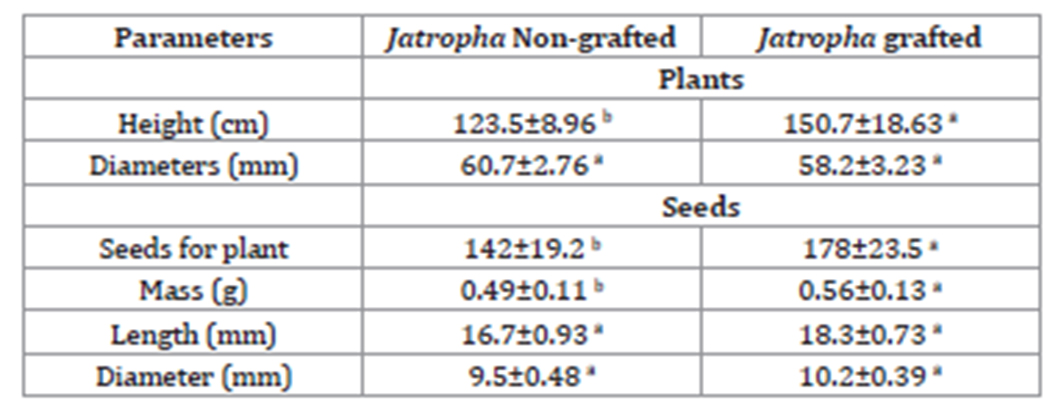Seed oil content and composition of Jatropha curcas (L.) and grafted Jatropha curcas (L.) on Jatropha cinerea (Ortega) Muell. Arg. rootstock
Palabras clave:
Jatropha, ácidos grasos, injertos, portainjerto, climaResumen
Jatropha curcas has been investigated for its high content of oil, its moderate salinity and drought tolerance, and Jatropha cinerea is a species that can withstand long drought periods and tolerate salinity up to 100 mM of NaCl. The aim of this study was to graft J. curcas plants on J. cinerea and grow them in experimental semiarid conditions, different soil and climate conditions from those of J. curcas native area to analyze their effects on oil seed composition and content. The survival of grafted J. curcas on J. cinerea rootstock was 95%. Seeds from grafted and non-grafted plants were analyzed to determine their oil content. The grafted plants showed greater height (150.7 cm) and oil content (51.3%) than the non-grafted plants (123.5 cm and 49.2%, respectively) without affecting their fatty acid composition. The meteorological information of the experimental plot (Baja California Sur, Mexico) showed values below those necessary for good phenological development; nonetheless, the graft improved its characteristics. Therefore, the use of grafted plants is an option for the establishment of J. curcas plantations in other parts of the world with different soil and climate conditions than those where they grow in the wild.
Descargas

Descargas
Publicado
Cómo citar
Número
Sección
Licencia
Aquellos autores/as que tengan publicaciones con esta revista, aceptan las Políticas Editoriales.










.jpg)




